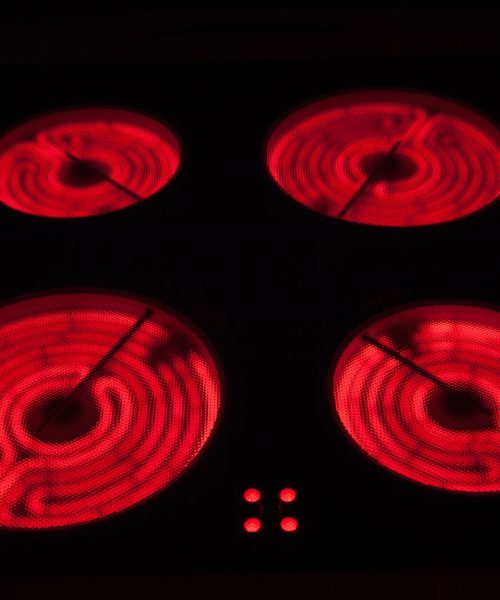When someone hears the word “bioprinter,” it likely conjures up images of bulky hardware buzzing loudly on a desk in a brightly lit laboratory. But researchers from the École polytechnique fédérale de Lausanne (EPFL) School of Engineering are now turning that image on its head with the creation of what they are calling the world’s first, pill-sized “ingestible bioprinter.”
Using magnets and an infrared laser, the researchers demonstrated they could remotely guide a capsule (roughly the size of a chunky prescription pill) toward ulcers in the gastrointestinal tract. Once in place, the printer releases a living “bio-ink” to promote healthy cell repair. Early testing suggests the tiny bioprinter could help heal gastrointestinal tissue damage and potentially seal hemorrhages, all without the need for invasive surgery. And while still in the early stages of testing, the researchers say this model could serve as the “foundation” for an entirely new modality of non-invasive treatment.
The findings were detailed this week in the journal Advanced Science.
“By combining the principles of in-situ bioprinters with the drug release concepts of smart capsules, we can envision a new class of device: a pill-sized, swallowable bioprinter,” Laboratory for Advanced Fabrication Technologies Lab Head Vivek Subramanian said in a statement.

Designing a printer the size of a jelly bean
The idea for an ingestible bioprinter stems from a major roadblock in how healthcare professionals treat gastrointestinal disease. In 2019, an estimated 2.56 million people worldwide died from such conditions, many related to inflammatory bowel disease and ulcerative colitis. Current treatment regimens typically focus on managing symptoms rather than addressing the root cause, often involving underlying tissue damage. That’s because surgically repairing this damage usually requires invasive procedures. But cutting a patient open isn’t a minor surgery–.it often involves potentially risky anesthesia and significantly increases risks of infection.
But what if a therapeutic could help heal that tissue from the inside? That’s where the pill-sized bioprinter comes in. First, a quick clarification of terms: in their paper, the researchers define a bioprinter as “essentially a controlled dispenser that moves along at least two axes to pattern biomaterials.” Using that definition as a baseline, they set out to create a spring-loaded bio-ink capsule, which they call the Magnetic Endoluminal Deposition System (MEDS).
The MEDS design functions much like the spring-loaded aspect of a ballpoint pen. The capsule is loaded with a “bio-ink” derived from seaweed, which, when deployed, serves as a scaffold for healthy cells to grow over. The ink is released after its pushed forward by an internal spring, similar to the mechanism of clicking a pen to draw out its ink. Like a pen, the spring returns back to its starting point. Once the ink is expelled, the researchers say a surgeon can use the magnetic guidance system to retrieve the capsule “via the same oral route.”
What makes MEDS particularly innovative is that the entire process occurs without any internal electronics or tethers connecting it to the outside of a patient’s body. Instead, a small magnet embedded in the capsule allows an external robotic arm in the operating room to “steer” the printer to its target location. Once in place, the spring is activated by near-infrared (NIR) radiation that is triggered when the surgeon points an NIR laser at it from outside the body.
After being expelled from the capsule, the ink is traced in a pattern around the damaged tissue to ensure maximum coverage. In the case of an ulcer, the ink both protects the wound from exposure to gastric juice and can also be combined with additional therapeutics to help accelerate healing. The researchers tested the device on two artificial ulcers in simulated gastric tissue. They also used a similar setup to model a hemorrhage. When deployed, the ingestible bioprinter was able to extrude a sealant and induce coagulation, effectively closing the simulated hemorrhage.
“In our controlled lab experiments, our cell-laden bio-ink retained its structural integrity for over 16 days, suggesting its potential as a ‘micro-bioreactor’ that can release growth factors and recruit new cells for wound healing,” PhD student Sanjay Manoharan said in a statement.
Related: [New bioprinter 3D prints human tissue 10x faster]
Sending bioprinters beyond the guy
The researchers are hopeful that this new type of therapeutic delivery method could one day be used to treat a variety of diseases, both gastrointestinal and beyond, that would otherwise require invasive surgical procedures. They are already planning to expand their testing to include blood vessels and other tissues outside the abdominal cavity. Doing so will likely require outfitting the capsule with stronger magnets to increase the range at which it can be controlled.
What remains unclear, though, is when, or even if, a procedure using this bioprinter will become available to the general public. Clinical studies on humans still need to be conducted, and even then, there’s a long road ahead before it can be considered a viable treatment option. Still, the researchers involved are optimistic that MEDS “establishes core engineering principles” for the future development of non-invasive bioprinting systems.






